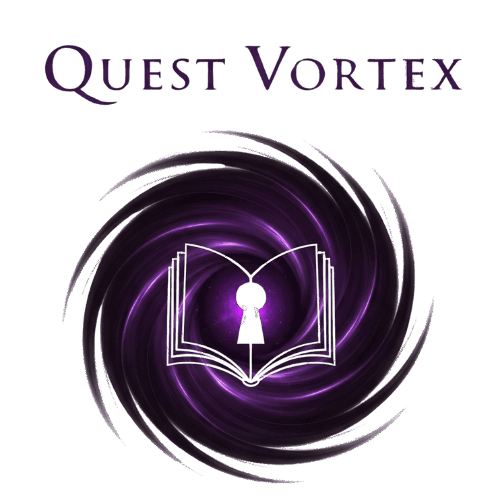If you’ve ever tried to build an astral elf for a campaign, you know the mix: starlight hair, calm voice, weird time math from the astral plane, and a love-hate relationship with Spelljammer ships. In my experience, people picture “space elf” and assume it’s all glitter and zero gravity. It’s not. It’s grace under pressure. It’s ready-to-roll darkvision and a long memory. Also: tiny cosmic jokes, radiant sparkles, and a quiet stare that says “I saw your soul trip over its own shoe.” I’ve been messing with this stuff for over a decade. Table rulings, lore deep dives, long nights with bad pizza. So yeah, I’ve got opinions.
Why I Keep Coming Back to Star-Side Elves

I got hooked back when I first cracked open a book that whispered about the silver void. The art showed thin ships crossing nothingness like swans with swords for bones. I remember the first time a DM let me board a spelljamming helm. We launched, hit a gravity well, and a githyanki raider waved like we were old friends. That session was chaos. It was also the night I learned how elves feel when time stops moving the way it does on the ground.
Most folks learn the basics from the same places. You skim a wiki page, you read a forum fight, you ask your GM if “starlight step” is a bonus action. Then boom: you’re knee-deep in cosmology charts. If you want a primer that doesn’t fry your brain, the short entries on the Astral Plane and classic Spelljammer: Adventures in Space can help. They don’t cover table drama, but they’ll sketch the map.
The Vibe (Yes, Vibe Matters)
Forget the stereotype of a woodsy archer who talks to deer. The space-born elf runs on poise and patience. The tone is cool. Not cold. Just quiet and sure. Their humor is dry. Dryer than a bone on a desert moon. They’ve watched stars blink out and ships go dark. They can sip tea while a mind flayer sniffs the air and says, “Tea?” That’s the energy.
Mechanically, they lean into finesse builds. Trick shots. Smart decisions. If you want a “bonk it with a hammer” hero, go for it, but you’ll feel the friction. I’ve always found that these elves sing when you lean on dexterity, a little intelligence, maybe a touch of wisdom. You want thinking battles. Positioning. Quick steps and a beam of light when it counts.
Lore That Actually Helps You Roleplay
Here’s the way I pitch it to new players at my table: this elf grew up on the edge of forever. Time is weird out there. Memory is long. They treat every meeting like it could echo for centuries. That’s why they’re polite even when they’re mad. They pause. They study faces. They are not shy. They are measured.
If you want to dive deeper, I’ve kept a running list of lore notes, house rules, and spicy takes in my corner of game lore. Also, it never hurts to browse the bigger picture maps, like the planes of the D&D cosmology. That’s the scaffolding that makes the whole space-elf thing feel real at the table.
How I Build Them at the Table
Let’s be blunt. Edition and table rules can change the exact features. Some groups run older rules, some run the latest updates, some just go vibes-only and hack it all. So I focus on patterns that keep hitting:
- Light or radiant cantrip flavor. Something that glows or burns.
- A short-range “blink” or step, tied to proficiency or rest. Makes you feel slippery.
- Standard elf perks: sharp senses, resistance to charm, sleep immunity, and that deep trance instead of a full sleep.
- Darkvision because space is not bright. Not always.
If your GM is strict, check the book. If your GM is chill, focus on story. Either way, keep the theme: star-touched magic, clean movement, and calm control.
Classes That Click (From My Painfully Honest Notebook)
- Wizard or Bladesinger: the finesse brain build. Looks great by a crystal window.
- Ranger (Gloom Stalker or Horizon Walker): space-scout energy, planar travel tricks.
- Cleric (Light or Twilight): radiant, protective, useful in the void.
- Warlock (The Celestial or Great Old One): because stars whisper, and sometimes they don’t whisper nice.
- Rogue (Arcane Trickster): you blink, you don’t get hit, you filch the key and shrug.
Quick Build Table: Features I Expect at Most Tables
| Theme | What It Feels Like | Why It Helps |
|---|---|---|
| Starlight Magic | A small beam, glow, or spark | Targets low-HP foes, signals allies, fits the vibe |
| Short-Range Step | Teleport a few squares | Escape grapples, dodge AOE, reach levers |
| Elf Resilience | Hard to charm, no sleepy-time spells | Bosses can’t cheese you with lullabies |
| Darkvision | See in dim light | Saves torches, helps in busted ship corridors |
Simple Gear That Makes You Look Like You Know Things
- Light armor, high Dex, no shame in a shield if your GM allows it.
- A ranged option with radiant flavor if possible. Bows feel classic. Wands are tidy.
- One tool for ship life: navigator’s tools, calligrapher’s supplies for star charts, or tinkering gear for helm maintenance.
- Rations and a heat source. Yes, even in space. Empty decks get cold.
Starter Kit Table: My Go-To Loadouts
| Playstyle | Core Tools | Backup Plan |
|---|---|---|
| Scout-Caster | Shortbow, focus, light armor | Calm emotions tone, smoke beads, rope |
| Blade-Dancer | One-handed finesse blade, focus | Misty escape, ball bearings, mirror |
| Radiant Support | Symbol, shield, healing kit | Light cantrip spam, spare lantern crystals |
Ship Life, Or: Why Your Boots Stick To the Floor
People get confused about gravity on those ships. The short version: most of them have a plane of pull across the deck. Don’t fall off the side. If you do, throw a rope and pray. The helm does weird things with minds. It’s not horror, but it’s not soothing. I once roleplayed a pilot who got nosebleeds every time we hit a dead magic zone. The crew passed me oranges like I was a nervous parrot. Ship life needs humor or it eats you.
There’s a decent history write-up here if you like the meta view of the setting: Spelljammer overview. If you want the current book people use at most tables, you’re probably looking for this boxed set. Again, wiki pages are not rulebooks. But they point the way.
DM Notes I Wish Someone Told Me
- Keep ship combat simple. One or two fun hazards. Not twelve.
- Let the space-elf have a social win every arc. They see things others miss.
- Give the void a sound. A soft hum. A ticking mast. Make it tangible.
If you want examples of clean session flow, I drop breakdowns in my walkthroughs, and I dumped a full strategy piece here: master RPG walkthroughs. It’s not pure space content, but the pacing tricks carry over.
Roleplay Hooks That Don’t Feel Like Homework
- Star Etiquette: your elf bows to the night sky before sleeping. Habit. Cute. Slightly eerie.
- Time Blind: they forget birthdays but remember comets.
- Quiet Fury: when insulted, they go still. Then they ask a polite question that ruins the room.
- Souvenir Rocks: they carry stones from far moons. Each one has a story.
- Light Allergy: too much sun hurts. They squint and curse at noon like a noble bat.
How They See the Rest of the Party
- Barbarian: “A meteor in boots. Good to be near it. Not under it.”
- Cleric: “Steady candle in the dark. I’ll hold the wind.”
- Rogue: “A problem with legs. My favorite kind.”
- Wizard: “Family, but with more smoke and less tea.”
- Paladin: “We have the same stars, different rules.”
Common Myths I Keep Swatting
- Myth: They’re emotionless. Reality: they feel a lot. They just hold it like glass.
- Myth: They’re all archers. Reality: the best one I ran was a support caster with a bad card habit.
- Myth: Space needs sci‑fi tech. Reality: crystal ships and magic helms are enough. Let weird be weird.
When the Rules Get Fuzzy
Every campaign has one moment where someone argues about rest times in the void. We’ve seen the threads. My take is simple: agree at Session Zero. If the astral plane makes time soft, great. If the ship enforces a clock, fine. Pick a rule and stick to it. Don’t turn a cool star scene into a law school exam.
For folks who like reading about elves beyond the space stuff, the broad notes on D&D elves can help you color the family tree. Then layer the void on top. Polite ancestors. Weirder cousins. Messy dinners. You get it.
My Favorite Character Beat
I once played a ship’s steward who collected stories like taxes. I’d ask each NPC to leave one memory at the door. “You won’t feel lighter,” I’d say, “but the ship will.” People loved it. Or pretended to. When we hit a dead world, I planted the memories like seeds. One of them sprouted. Was that mechanics? No. That was the table nodding and fooling around until something clicked. That’s the good stuff.
If You’re a New Player, Start Here
Don’t stress the exact spell list. Start with a light-based cantrip, a footwork trick, and a steady ranged option. Ask your GM for one fun void trinket. A little star compass. A shard of a broken helm. A glass marble that glows when someone lies. Keep your backstory short and weird.
Then read a couple short pieces. A review helps you see what actually plays well. I park mine under RPG reviews. For trip planning and hooks, I keep notes in adventure guides. If you want more examples of how to stitch lore into scenes, circle back to my game lore posts. Use what works. Ignore the rest.
Using Void Flavor Without Going Full Space
You can play a star-touched elf in ground campaigns too. Swap ships for old ruins, astral rifts for mirrors, githyanki for ambitious nobles. The tone still works. The calm, the light, the long view. Add one or two odd details and you’re there.
A Tiny Tour of Cosmology Without the Headache
Here’s the short map I give new folks:
- Material world: normal-ish. Swords, barns, taxes. The place with coffee.
- Astral: silver-breath nothing with thoughts floating past. Travel highway. Pirates included.
- Fey and Shadow: mood worlds. Color filters. Everything’s louder or softer.
- Outer planes: big feelings made geography. Gods on loudspeakers.
Read more when you want; use it when it’s fun. The point of star flavor is mood, not homework. If you like reading, the bite-sized entries on the Astral Plane and the big-picture cosmology page are safe bets.
NPCs You Can Steal Tonight
- The Lantern Archivist: keeps every lamp on the ship named after a lost friend. Talks to them. They talk back. Maybe.
- The Smiling Pilot: grins when scared. Hates cloves. Loves cats. The helm likes them just fine.
- The Mirror Courier: delivers sealed mirrors that hold messages. Never looks in one. Says it’s bad luck. Is it?
- The Quiet Cartographer: maps comets. Refuses to map people. “You change too much.”
If you use these, and you get stuck on pacing a session or two, the longer breakdowns in my walkthroughs should bail you out. And yeah, the big article on beating choke points—this one: master RPG walkthroughs—has a section on breathable scene transitions that works great on deck.
Players Ask Me These Things All the Time
- “Do their eyes glow?” Sometimes. Your table decides. I like a faint ring when a spell pops.
- “Are they immortal?” Not really. But time in the astral moves weird, so they can feel timeless.
- “Do they need helmets in space?” Magic ships handle air. If you jump, you’ve got a problem. Pack rope.
- “Do they hate other elves?” Nah. They roll their eyes at tree cousins, and tree cousins roll back. Family.
- “Can I be edgy?” Yes. But be funny too. This setting shines with dry humor.
Adventures That Actually Fit the Aesthetic

I love a good heist on a moon market. Or a rescue in a shattered cathedral floating over nothing. Or a chase through a ring of ice where your footwork step is the only reason you live. When I plan those, I draft on paper, then I cannibalize bits from my own adventure guides and older RPG reviews. I test on a group that laughs at my bad accents. If they smile? It ships.
Lore Crossovers That Spark
Mix in a fey bargain that goes sideways in zero gravity. Toss in a mind flayer chef who does moral debates over soup. Thread a star cult that doesn’t worship stars, just silence. Want more raw info to spark ideas? The summary pages for Spelljammer and the basic elf write-up make decent kindling.
An Honest Word on Table Balance
I’ve run space-leaning elves that felt too slippery at low levels. Here’s what I did. I gave enemies smarter positioning. I put more levers in rooms. I let teleport feel cool but not free. Also, I handed out bright light hazards that pinged stealth. Counterplay beats nerf bat. Always. And I told the player early: “If this feels too easy, I’ll adjust rooms, not you.” They loved that.
What I Think About Party Dynamics
Give the star-touched character a human anchor. A cook. A friend who hates the void. Or a ranger who thinks gravity is a rumor. That bond keeps the cool calm elf from drifting into aloof island mode. Play the bond in small scenes. Tea on a crate. A bet over cards. A whispered talk about home.
Deep-Cut Flavor Bits That Pay Off Later
- Star Names: your elf has a true name they don’t use on deck. Share it once, at the right time.
- Light Diet: they track phases of a moon, even far from it. It’s like checking the weather in your hometown.
- Quiet Inventory: one pouch for memories, one for debts, one for seeds.
- Ship Superstitions: never whistle near the helm, never count stars out loud, never joke about air.
If You’re a GM, Steal My Pacing Trick
I run void scenes like a heartbeat. Thump (silence). Thump (whisper). Thump (motion). Then a spike: pirate boarders, hull crack, wild spell. Let the star-elf shine during the silence beats. That’s where they do their best work. Seeing, noticing, choosing. The spike is for the barbarian. That’s fair.
If you want to compare how other GMs push timing, I’ve got examples scattered in my walkthroughs and linked from adventure guides. It’s messy. It’s real. It works.
A Tiny Word on History Nerd Stuff
Some folks obsess over which god touched which star and when. That can be fun. Or a trap. Read a bit if you like, then hit the table. I’ll point you to short primers instead of a museum tour. Hit the Astral Plane page for context, and peek at the box set entry to see how the modern stuff frames it. Enough to sound smart. Not enough to lose a weekend.
My Pet Peeves (Because I’m Me)
- Players who say “space elves are just elves with LEDs.” No. Be nice to your stars.
- GMs who treat void scenes like waiting rooms. Give us hum, ice, breath fog, a loose bolt.
- Over-perfect backstories. Leave jagged edges. Let the table sand them down.
Small Scenes You Can Drop In Tonight
- Deck Watch: frost on the rail, distant singing, a light flickers in the hold.
- Market Brawl: drifting stalls, floating pears, someone pulls a knife made of moon glass.
- Chapel of Quiet Suns: candles that won’t burn, a window that shows a memory instead of the sky.
Also, if you care about raw, no-fluff opinions on space modules, I keep a rotating list under RPG reviews. And when I get spicy about balance, I throw notes into game lore. It’s my house; I rant; readers yell back; we survive.
Comparing Planet-Foot and Void-Foot Play
- On land: sunlight, crowds, roads. Noise makes stealth hard.
- In the void: silence, long sight lines, air limits. Movement is king.
- On ships: resource management. Fix leaks. Guard the helm. Don’t break the kitchen. Trust me.
That’s why the calm, quick, light-flavored kit is gold up there. You never know when the floor tilts and your friend is suddenly holding the galaxy’s worst slip-n-slide.
A Word on the Family Tree
If you want to place a star-touched elf among other elves, go skim the general write-up on elves in D&D and compare notes. Add void culture. Add ship habits. Add patience. And there you go. Different branch, same roots. That keeps roleplay clean and stops the “what even are they?” speech every session.
Little Things I Keep In My Inventory
- Rope. Always rope. I’m not kidding.
- Chalk for star rooms and quiet signals.
- Three coins from three ports. One bribe, one promise, one bet.
- A bell I never ring unless we’re lost.
I could keep going, but you get the picture. If you want deeper dives on adventure planning, check the adventure guides. If you’re stuck stitching scenes, the master RPG walkthroughs piece maps how to cut dead time without losing mood. For lore glue, there’s the game lore shelf. Everything else is just dice, tea, and the usual arguments about rules text.
FAQs
- Do I need to read a whole book before I play one? No. Grab a one-page summary, ask your GM, and go. Learn on the road.
- What class is easiest for a first timer? I’d say ranger or cleric. Simple tools, clear jobs, still feels starry.
- How do I make them funny without being goofy? Dry jokes. Understatements. “Ah yes, pirates again.” That tone.
- Can they come from a regular forest and still feel right? Sure. Say they were touched by a rift or raised on a ship later. Done.
- What if my group hates space? Keep the magic and mood. Put it in ruins, mirrors, and night roads. Same flavor, different sky.
Anyway. I’m off to patch a hull and pretend I know which comet we just passed. If I remember, I’ll write up the market with the floating pears next week. If not, nudge me in the RPG reviews comments and I’ll grumble and do it.

Thomas Hill: Your guide to epic adventures. I cover RPG Reviews, Walkthroughs, Game Lore, and Open World Rankings. Ready for your next quest?




Love the vibe and roleplay tips for astral elves! Poise, patience, and quiet surety – fantastic insights.
Love the mix of cosmic lore and character depth in this guide. Poised space elves are now on my must-play list!
What unique lore inspired your creation of the Astral Elf’s roleplay characteristics?